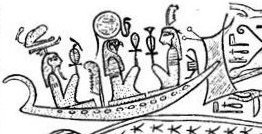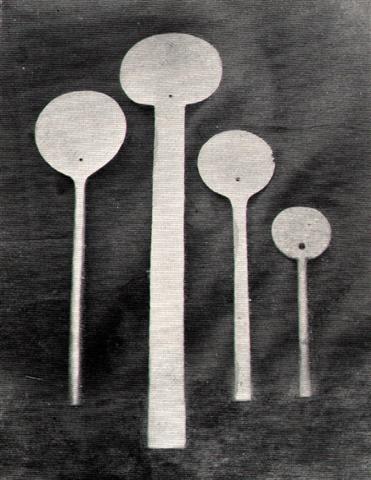11. Of interest is the special type of anch onboard the spring ship, with a straight vertical 'string', because it could possibly cast some light upon a common rongorongo type of sign, viz. maitaki.
Normally the maitaki glyphs have a triplet of 'balls' vertically arranged around a 'string', but a single greater one forms the head of manu rere in Eb7-15:
In rongorongo vertical straight 'strings' may have been used as marks of measurement, and this idea might imply that the Bolivian topo ovals could have had such vertical strings in order to make the observations in the night more accurate. When the observed star passed from one side of the string to the other it was for a moment not visible, and at that point time and space could be exactly correlated. However, according to another Posnansky picture he had found instruments in which a tiny hole was its only opening:
If Sun was the object of study, then a little hole would have been better than a vertical string. The opaque oval form would protect the eye. Maybe there were two kinds of topos, one for the night and one for the daytime observations. And perhaps the daytime ones had instruments with 'stems' instead of 'needles'. |



